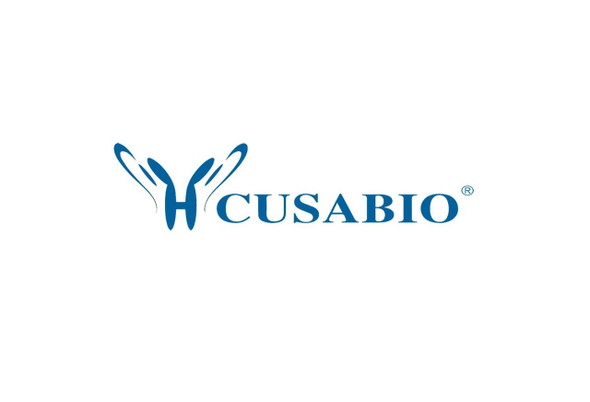Cusabio Human Recombinants
Recombinant Human TIR domain-containing adapter molecule 1 (TICAM1) | CSB-CF811598HU
- SKU:
- CSB-CF811598HU
- Availability:
- 18 - 23 Working Days
Description
Recombinant Human TIR domain-containing adapter molecule 1 (TICAM1) | CSB-CF811598HU | Cusabio
Alternative Name(s): Proline-rich, vinculin and TIR domain-containing protein B Putative NF-kappa-B-activating protein 502H Toll-interleukin-1 receptor domain-containing adapter protein inducing interferon beta
Gene Names: TICAM1
Research Areas: Immunology
Organism: Homo sapiens (Human)
AA Sequence: MACTGPSLPSAFDILGAAGQDKLLYLKHKLKTPRPGCQGQDLLHAMVLLKLGQETEARISLEALKADAVARLVARQWAGVDSTEDPEEPPDVSWAVARLYHLLAEEKLCPASLRDVAYQEAVRTLSSRDDHRLGELQDEARNRCGWDIAGDPGSIRTLQSNLGCLPPSSALPSGTRSLPRPIDGVSDWSQGCSLRSTGSPASLASNLEISQSPTMPFLSLHRSPHGPSKLCDDPQASLVPEPVPGGCQEPEEMSWPPSGEIASPPELPSSPPPGLPEVAPDATSTGLPDTPAAPETSTNYPVECTEGSAGPQSLPLPILEPVKNPCSVKDQTPLQLSVEDTTSPNTKPCPPTPTTPETSPPPPPPPPSSTPCSAHLTPSSLFPSSLESSSEQKFYNFVILHARADEHIALRVREKLEALGVPDGATFCEDFQVPGRGELSCLQDAIDHSAFIILLLTSNFDCRLSLHQVNQAMMSNLTRQGSPDCVIPFLPLESSPAQLSSDTASLLSGLVRLDEHSQIFARKVANTFKPHRLQARKAMWRKEQDTRALREQSQHLDGERMQAAALNAAYSAYLQSYLSYQAQMEQLQVAFGSHMSFGTGAPYGARMPFGGQVPLGAPPPFPTWPGCPQPPPLHAWQAGTPPPPSPQPAAFPQSLPFPQSPAFPTASPAPPQSPGLQPLIIHHAQMVQLGLNNHMWNQRGSQAPEDKTQEAE
Source: in vitro E.coli expression system
Tag Info: N-terminal 10xHis-tagged
Expression Region: 1-712aa
Sequence Info: Full Length
MW: 79.9 kDa
Purity: Greater than 90% as determined by SDS-PAGE.
Relevance: Involved in innate immunity against invading pathogens. Adapter used by TLR3 and TLR4 (through TICAM2) to mediate NF-kappa-B and interferon-regulatory factor (IRF) activation, and to induce apoptosis. Ligand binding to these receptors results in TRIF recruitment through its TIR domain. Distinct protein-interaction motifs allow recruitment of the effector proteins TBK1, TRAF6 and RIPK1, which in turn, lead to the activation of transcription factors IRF3 and IRF7, NF-kappa-B and FADD respectively.
Reference: "A novel Toll/IL-1 receptor domain-containing adapter that preferentially activates the IFN-beta promoter in the Toll-like receptor signaling."Yamamoto M., Sato S., Mori K., Hoshino K., Takeuchi O., Takeda K., Akira S.J. Immunol. 169:6668-6672(2002)
Storage: The shelf life is related to many factors, storage state, buffer ingredients, storage temperature and the stability of the protein itself. Generally, the shelf life of liquid form is 6 months at -20?/-80?. The shelf life of lyophilized form is 12 months at -20?/-80?.
Notes: Repeated freezing and thawing is not recommended. Store working aliquots at 4? for up to one week.
Function: Involved in innate immunity against invading pathogens. Adapter used by TLR3 and TLR4 (through TICAM2) to mediate NF-kappa-B and interferon-regulatory factor (IRF) activation, and to induce apoptosis. Ligand binding to these receptors results in TRIF recruitment through its TIR domain. Distinct protein-interaction motifs allow recruitment of the effector proteins TBK1, TRAF6 and RIPK1, which in turn, lead to the activation of transcription factors IRF3 and IRF7, NF-kappa-B and FADD respectively.
Involvement in disease: Herpes simplex encephalitis 4 (HSE4)
Subcellular Location: Cytoplasmic vesicle, autophagosome
Protein Families:
Tissue Specificity: Ubiquitously expressed but with higher levels in liver.
Paythway: NF-kappaBsignalingpathway
Form: Liquid or Lyophilized powder
Buffer: If the delivery form is liquid, the default storage buffer is Tris/PBS-based buffer, 5%-50% glycerol. If the delivery form is lyophilized powder, the buffer before lyophilization is Tris/PBS-based buffer, 6% Trehalose, pH 8.0.
Reconstitution: We recommend that this vial be briefly centrifuged prior to opening to bring the contents to the bottom. Please reconstitute protein in deionized sterile water to a concentration of 0.1-1.0 mg/mL.We recommend to add 5-50% of glycerol (final concentration) and aliquot for long-term storage at -20?/-80?. Our default final concentration of glycerol is 50%. Customers could use it as reference.
Uniprot ID: Q8IUC6
HGNC Database Link: HGNC
UniGene Database Link: UniGene
KEGG Database Link: KEGG
STRING Database Link: STRING
OMIM Database Link: OMIM









